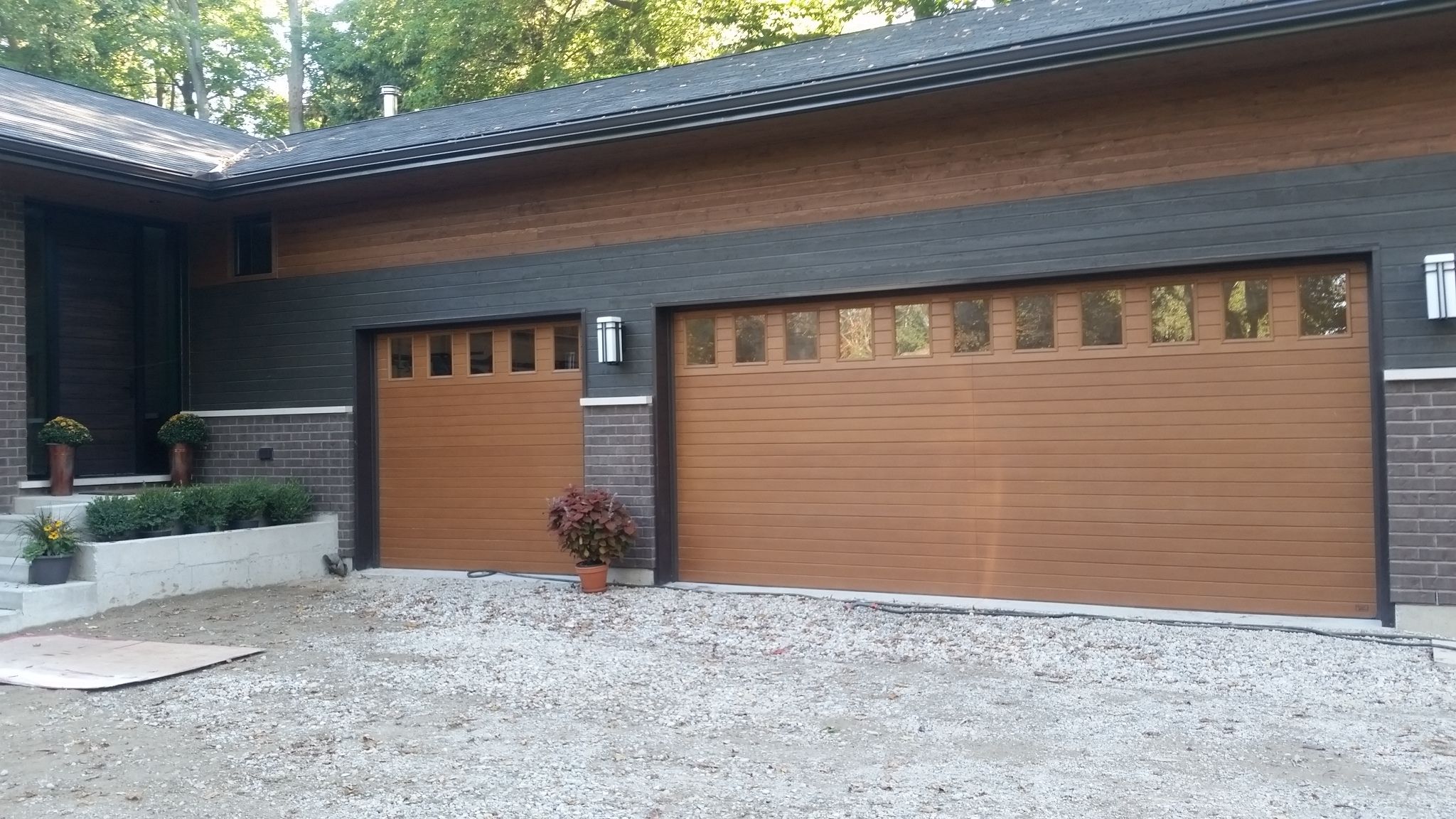Is your garage door refusing to close, leaving you frustrated and wondering why? Don’t worry, we’ve got you covered! In this blog post, we’ll reveal the common reasons behind a stubborn garage door that just won’t budge. From misaligned safety sensors to pesky obstructions, we’ll explore the possible culprits and provide simple solutions to get your garage door back on track. Get ready to troubleshoot like a pro and regain control of your garage!

Content
Common Causes for a Garage Door Not Closing
Is your garage door refusing to close? Don’t worry, we’re here to help you identify the common causes behind this frustrating issue. Let’s dive into the possible reasons and find solutions to get your garage door back on track.
Misaligned Safety Sensors
Safety sensors play a crucial role in preventing accidents and ensuring the smooth operation of your garage door. These sensors are located near the base of the door and emit an invisible beam. If this beam is interrupted, it signals the door to stop closing.
However, misalignment can throw these sensors off balance, causing the door to remain open or reverse direction. To realign the sensors, follow these simple steps:
- Locate the sensors on each side of the door near the floor.
- Check for any physical obstructions blocking the sensors.
- Gently adjust the sensors to face each other directly.
- Tighten the mounting brackets to secure the sensors in place.
Obstruction in the Door’s Path
Keeping the path of your Garage door spring repair Chesapeake clear is essential for smooth operation. Common obstructions include items such as toys, tools, or debris. These obstructions can prevent the door from closing properly.
To remove obstructions safely, follow these tips:
- Inspect the area around the door for any objects in the way.
- Carefully remove any obstructions, ensuring not to damage the door or tracks.
- Regularly clean the garage area to prevent future obstructions.
Issues with the Garage Door Opener
The garage door opener is an integral part of the door’s operation. If there are problems with the opener, it can impact the door’s ability to close. Some possible opener-related issues include:
- Malfunctioning remote control or keypad.
- Disconnected or damaged wiring.
- Faulty limit switches or motor.
To troubleshoot opener-related problems, consider the following steps:
- Ensure the remote control or keypad has fresh batteries.
- Check the wiring connections for any loose or damaged wires.
- Refer to the manufacturer’s instructions for resetting or adjusting the limit switches.
Problems with the Garage Door Springs
The springs in your garage door system are responsible for counterbalancing the weight of the door. If these springs are damaged or worn out, they can affect the door’s ability to close properly. Look out for the following signs of faulty springs:
- Door closes partially and then reverses.
- Uneven movement or sagging of the door.
- Loud noises or excessive vibration during operation.
If you notice any of these symptoms, it’s recommended to seek professional help to avoid any safety risks.
Electrical Problems
Electrical issues can also impact the functionality of your garage door. Signs of electrical problems include:
- Door not responding to remote control or keypad.
- Flickering lights or power disruptions.
- Strange noises or burning smells.
For basic troubleshooting of electrical issues, you can try the following techniques:
- Check the power source and ensure it’s connected properly.
- Inspect the circuit breaker or fuse box for any tripped breakers.
- If you’re unsure or suspect a more serious electrical problem, consult a professional technician.
DIY Solutions and Maintenance Tips
Maintaining your garage door is essential for its smooth and reliable operation. By performing routine maintenance tasks, you can prevent potential issues and prolong the lifespan of your garage door system. Let’s explore some DIY solutions and maintenance tips to keep your garage door in top shape.
Importance of Regular Maintenance
Regular maintenance is crucial to ensure the optimal functioning of your garage door. It not only enhances safety but also helps identify potential problems before they escalate. By dedicating a little time to maintenance, you can save yourself from costly repairs and inconveniences in the long run.
Checklist for Routine Maintenance Tasks
Follow this checklist to keep your garage door in excellent condition:
- Visual Inspection: Regularly examine the door, tracks, and hardware for any signs of wear, damage, or loose parts.
- Lubrication: Apply a silicone-based lubricant to the garage door springs, hinges, rollers, and tracks to reduce friction and ensure smooth movement.
- Tighten Hardware: Check and tighten any loose bolts or screws on the door and its components.
- Balance Test: Test the balance of your garage door by disconnecting the opener and operating the door manually. It should stay in place when partially open and move smoothly without resistance.
- Weatherstripping: Inspect and replace any worn-out weatherstripping to keep out drafts, dust, and pests.
- Safety Sensor Test: Test the safety sensors by waving an object in front of them while the door is closing. If the door doesn’t reverse, adjust or replace the sensors.
Additional Tips to Prevent Future Problems
Here are some extra tips to maintain the health of your garage door:
- Keep the Tracks Clean: Regularly clean the tracks from debris and dirt to ensure smooth movement.
- Avoid Slamming: Encourage everyone in your household to avoid slamming the garage door, as it can strain the system.
- Educate Family Members: Teach your family about proper garage door operation and safety precautions to prevent accidents.
- Protect from Extreme Weather: During harsh weather conditions, such as storms or extreme temperatures, take extra measures to protect your garage door from damage.
Conclusion
If your garage door refuses to close, it can be frustrating and inconvenient. However, don’t panic! There are a few common reasons why this might happen. Check if there are any obstructions, ensure the sensors are aligned, and inspect the opener’s settings. By troubleshooting these issues, you’ll likely find the solution and have your garage door closing smoothly in no time.
FAQs
Why won’t my garage door close when I press the remote button?
This could be due to a range issue or a problem with the remote control itself. Make sure you are within range and try replacing the batteries in the remote.
My garage door starts closing but then immediately reverses back up. What’s wrong?
This is likely caused by misaligned or dirty safety sensors. Check if there is any debris blocking the sensor’s path and ensure they are properly aligned and clean.
I’ve checked the sensors, but my garage door still won’t close. What else could be the problem?
There might be an issue with the garage door opener’s settings. Check the settings to make sure the force and travel limits are properly adjusted. Also, inspect the opener’s motor and gear assembly for any signs of damage or wear.
The garage door won’t close and the opener’s light flashes rapidly. What does this mean?
A rapidly flashing light on the opener indicates that there is a problem with the safety sensors. Ensure that they are properly aligned, clean, and not obstructed. If the issue persists, the sensors may need to be replaced.
My garage door doesn’t close during cold weather. What could be causing this?
Cold temperatures can cause the metal components of the garage door system to contract, leading to issues with the door’s operation. Lubricate the tracks, hinges, and springs with a silicone-based lubricant to help alleviate this problem.

Jason is the problem-solver extraordinaire. When your garage throws a challenge your way, he’s the one with a solution.

